您好,登錄后才能下訂單哦!
您好,登錄后才能下訂單哦!
這篇文章主要介紹mybatis-plus查詢源碼的示例分析,文中介紹的非常詳細,具有一定的參考價值,感興趣的小伙伴們一定要看完!
pom.xml
dependency> <groupId>com.baomidou</groupId> <artifactId>mybatis-plus-boot-starter</artifactId> <version>3.4.1</version> </dependency>
mapper
public interface GenTableMapper extends BaseMapper<GenTable> {
}@RunWith(SpringRunner.class)
@SpringBootTest(classes = GendemoApplication.class)
public class BlockqueueTestDemo {
@Autowired
GenTableMapper genTableMapper;
@Test
public void test(){
List<GenTable> genTables =
genTableMapper.selectList(new QueryWrapper<>());
}
}1.發現 genTableMapper 是一個代理對象類型。

2.進入代理對象MybatisMapperProxy , 調用其invoke 方法,方法的Class類型為BaseMapper.selectList()

3.其中cachedInvoker()方法會返回一個PlainMethodInvoker ,它重寫了MapperMethodInvoker 接口的invoke()方法

4.最終會調用MybatisMapperMethod的execute()方法

public class MybatisMapperMethod {
public Object execute(SqlSession sqlSession, Object[] args) {
Object result;
switch (command.getType()) {
case INSERT: {
Object param = method.convertArgsToSqlCommandParam(args);
result = rowCountResult(sqlSession.insert(command.getName(), param));
break;
}
case UPDATE: {
Object param = method.convertArgsToSqlCommandParam(args);
result = rowCountResult(sqlSession.update(command.getName(), param));
break;
}
case DELETE: {
Object param = method.convertArgsToSqlCommandParam(args);
result = rowCountResult(sqlSession.delete(command.getName(), param));
break;
}
case SELECT:
if (method.returnsVoid() && method.hasResultHandler()) {
executeWithResultHandler(sqlSession, args);
result = null;
} else if (method.returnsMany()) {
result = executeForMany(sqlSession, args);
} else if (method.returnsMap()) {
result = executeForMap(sqlSession, args);
} else if (method.returnsCursor()) {
result = executeForCursor(sqlSession, args);
} else {
Object param = method.convertArgsToSqlCommandParam(args);
// TODO 這里下面改了
if (IPage.class.isAssignableFrom(method.getReturnType())) {
result = executeForIPage(sqlSession, args);
// TODO 這里上面改了
} else {
result = sqlSession.selectOne(command.getName(), param);
if (method.returnsOptional()
&& (result == null || !method.getReturnType().equals(result.getClass()))) {
result = Optional.ofNullable(result);
}
}
}
break;
case FLUSH:
result = sqlSession.flushStatements();
break;
default:
throw new BindingException("Unknown execution method for: " + command.getName());
}
if (result == null && method.getReturnType().isPrimitive() && !method.returnsVoid()) {
throw new BindingException("Mapper method '" + command.getName()
+ " attempted to return null from a method with a primitive return type (" + method.getReturnType() + ").");
}
return result;
}
}5.這是經過判斷會進入executeForMany(sqlSession, args)方法,此時方法和參數都顯示出來了。sqlSession的類型是SqlSessionTemplate , 為什么要注意這個 sqlSession的類型?因為SqlSession是一個接口,有很多實現類,有時候我們并不知道到底調用了哪個實現類的selectList()方法,這個時候我們看類型就知道了,就可以進入SqlSessionTemplate類,找到selectList()打上斷點,debug就過來了。

6.利用同樣的方法,又調用了DefaultSqlSession的selectList()方法。

7.來到DefaultSqlSession的selectList() 方法中,此時已經進入到mybatis的源碼范圍了。executor的類型是MybatisCachingExecutor
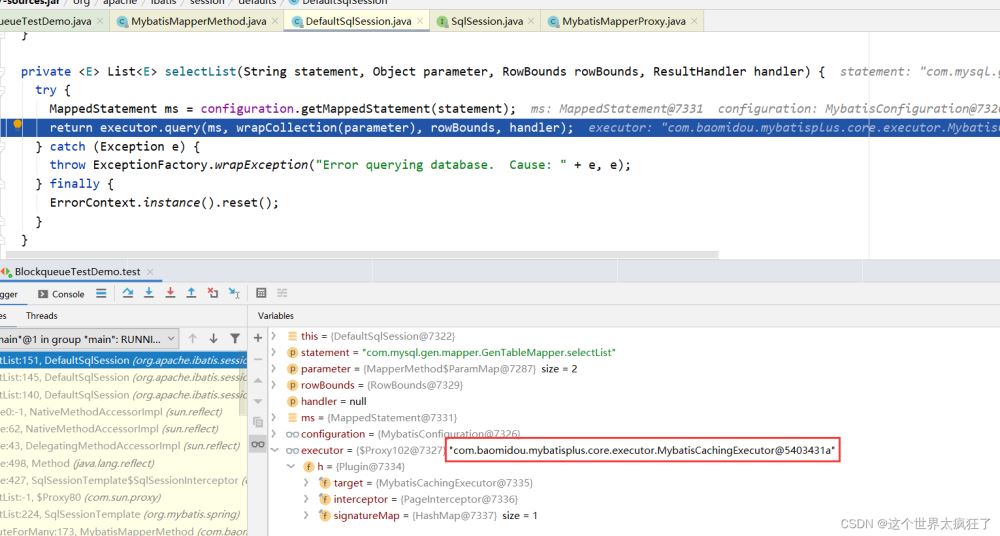
8.此時要注意MybatisCachingExecutor 代理類的handler是一個Plugin

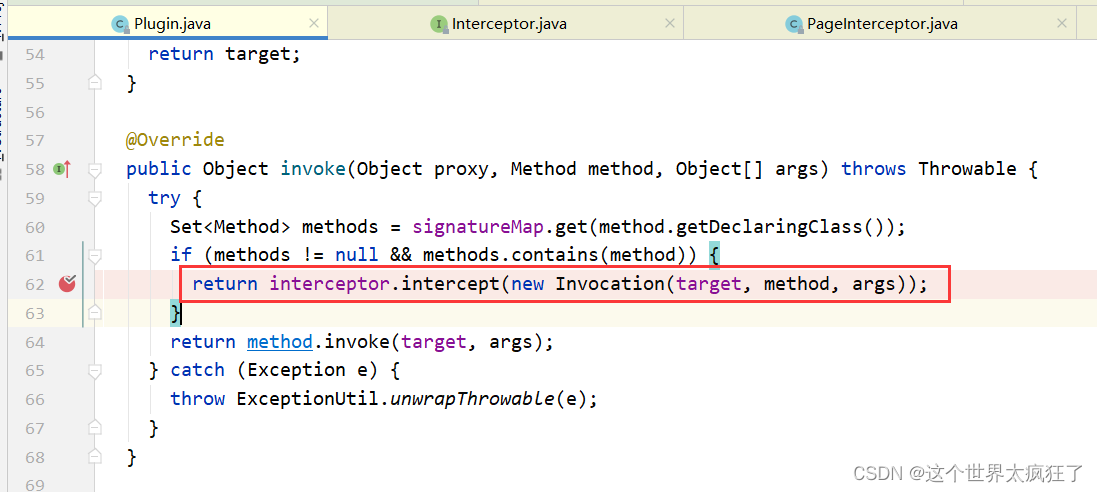
9.因為我使用到了分頁插件,所以會來到com.github.pagehelperPageInterceptor中
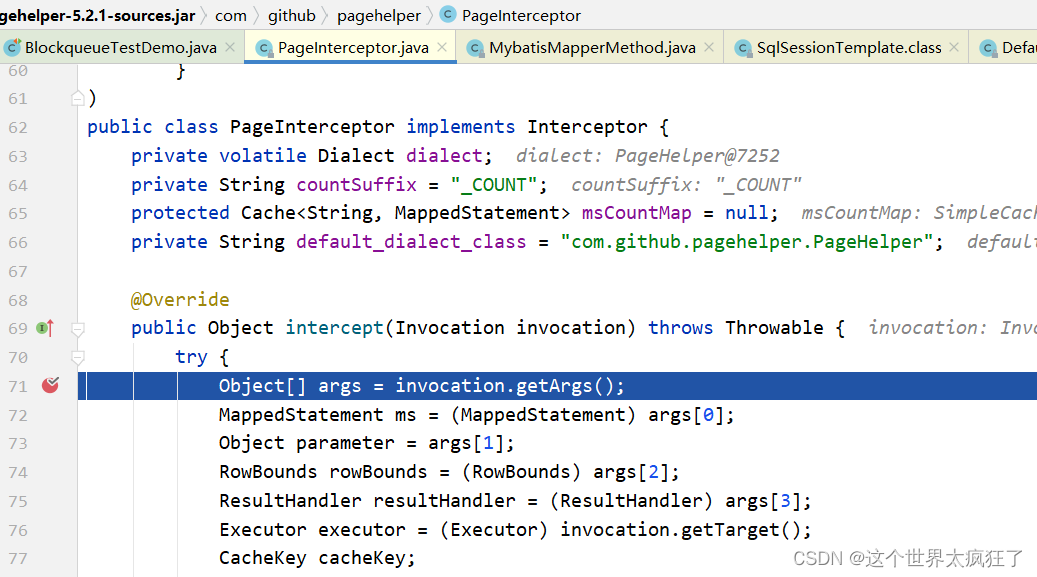
10.由MybatisCachingExecutor來執行查詢
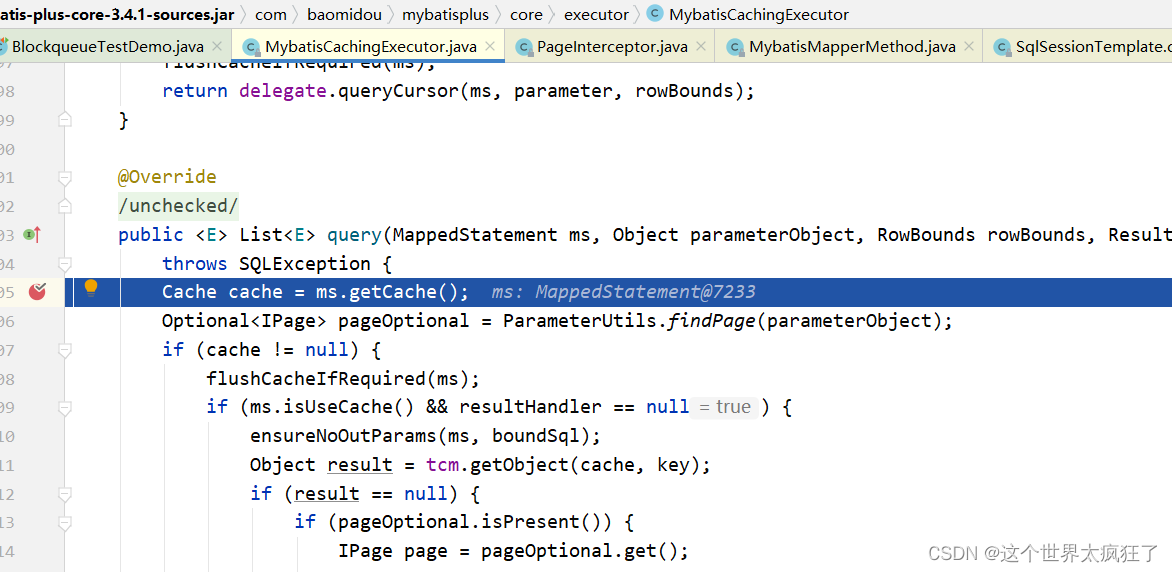
11.MybatisCachingExecutor 委派 BaseExecutor 執行查詢
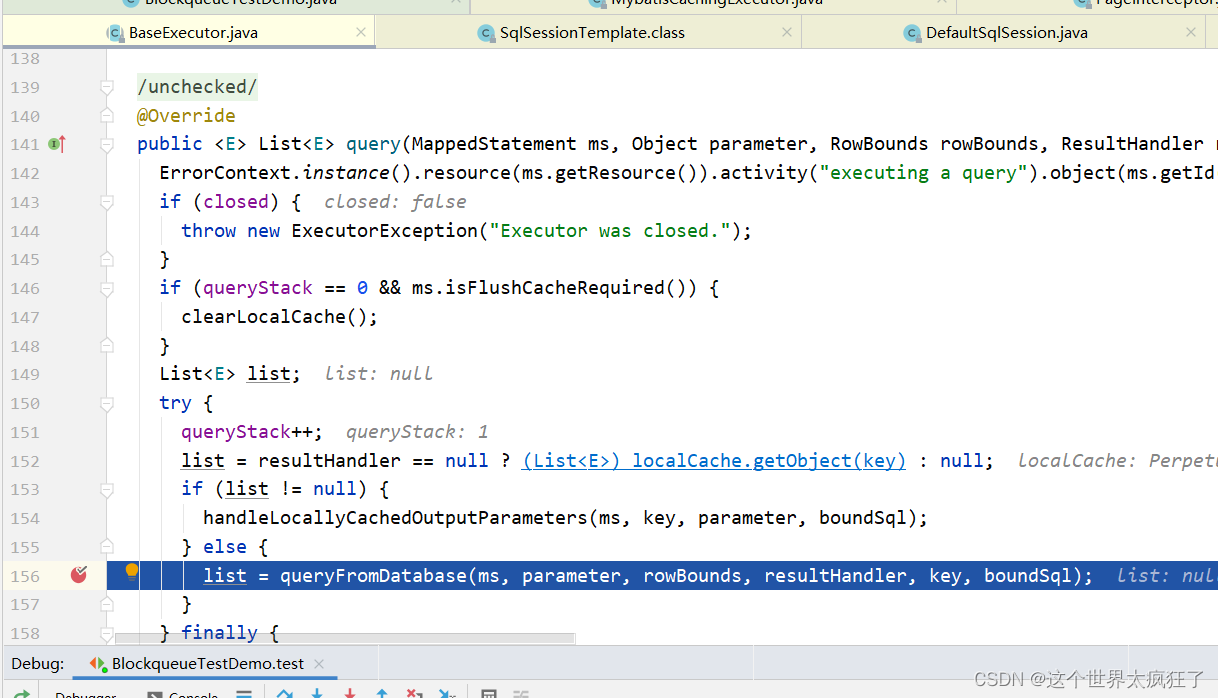
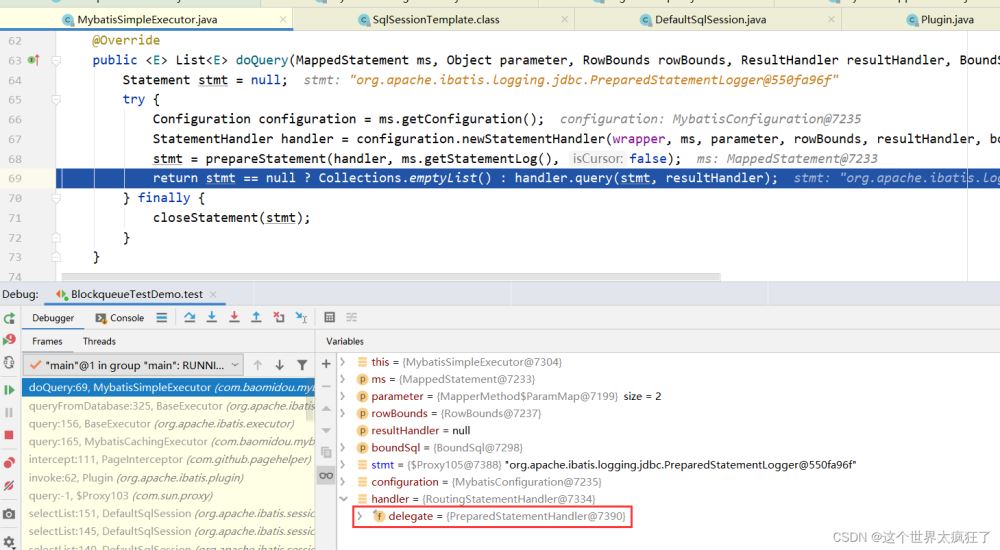
12.最終委派到PreparedStatementHandler來處理

13.最后由DefaultResultSetHandler來封裝結果集
@Override
public List<Object> handleResultSets(Statement stmt) throws SQLException {
ErrorContext.instance().activity("handling results").object(mappedStatement.getId());
final List<Object> multipleResults = new ArrayList<>();
int resultSetCount = 0;
ResultSetWrapper rsw = getFirstResultSet(stmt);
List<ResultMap> resultMaps = mappedStatement.getResultMaps();
int resultMapCount = resultMaps.size();
validateResultMapsCount(rsw, resultMapCount);
while (rsw != null && resultMapCount > resultSetCount) {
ResultMap resultMap = resultMaps.get(resultSetCount);
handleResultSet(rsw, resultMap, multipleResults, null);
rsw = getNextResultSet(stmt);
cleanUpAfterHandlingResultSet();
resultSetCount++;
}
String[] resultSets = mappedStatement.getResultSets();
if (resultSets != null) {
while (rsw != null && resultSetCount < resultSets.length) {
ResultMapping parentMapping = nextResultMaps.get(resultSets[resultSetCount]);
if (parentMapping != null) {
String nestedResultMapId = parentMapping.getNestedResultMapId();
ResultMap resultMap = configuration.getResultMap(nestedResultMapId);
handleResultSet(rsw, resultMap, null, parentMapping);
}
rsw = getNextResultSet(stmt);
cleanUpAfterHandlingResultSet();
resultSetCount++;
}
return collapseSingleResultList(multipleResults);
}以上是“mybatis-plus查詢源碼的示例分析”這篇文章的所有內容,感謝各位的閱讀!希望分享的內容對大家有幫助,更多相關知識,歡迎關注億速云行業資訊頻道!
免責聲明:本站發布的內容(圖片、視頻和文字)以原創、轉載和分享為主,文章觀點不代表本網站立場,如果涉及侵權請聯系站長郵箱:is@yisu.com進行舉報,并提供相關證據,一經查實,將立刻刪除涉嫌侵權內容。